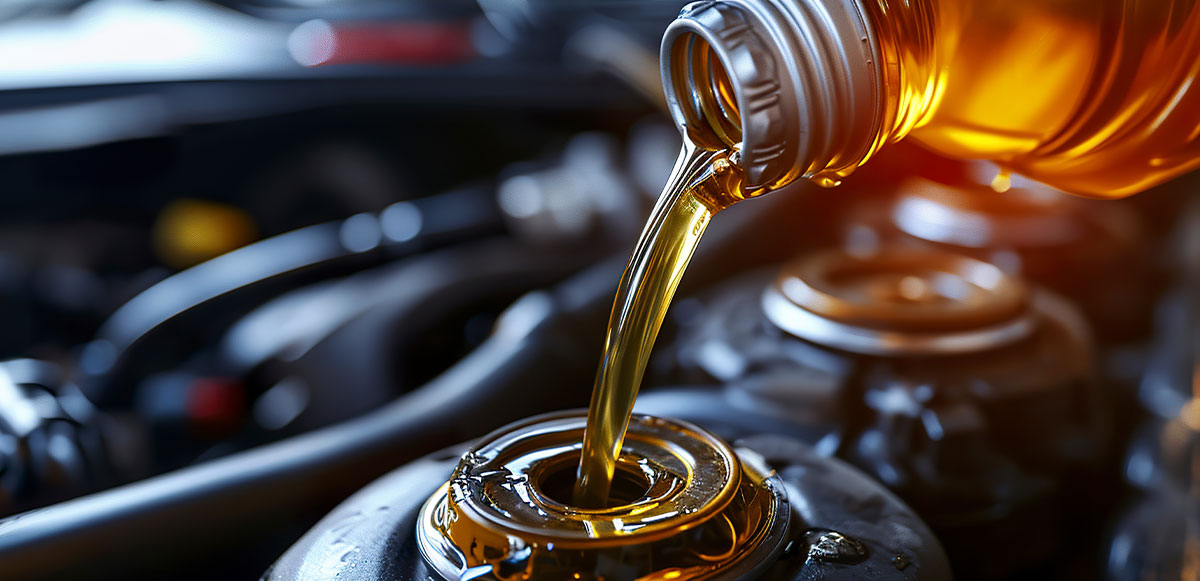Back to Basics: A Historical Understanding of API Specifications for Gasoline Engines


For vehicle owners, understanding API specifications can play a crucial role in providing adequate protection against build-up of engine sludge, oxidation, or wear. While the specifications have changed over the years, what they need to know regarding automotive gasoline engines is that the latest API Service Category includes the performance properties of each earlier category and can be used to service older engines where earlier category oils were recommended. In this blog, we’ll investigate current API specifications over the years and learn more about their applications.
What is API? API uses an alphanumeric system known collectively as API Service Categories to define specific engine oil performance standards. These categories are commonly used by vehicle, engine, and equipment manufacturers to identify the engine oil performance standards required by gasoline engines.
Over the years, API specifications for gasoline engines have changed. It is imperative that vehicle owners refer to their owner's manuals before consulting these charts. Oils often have more than one performance level. For automotive gasoline engines, the latest engine oil service category includes the performance properties of each earlier category, thus can be used to service older engines where earlier category oils were recommended.
API specifications over the yearsBefore delving into relevant API specifications to service gasoline engines of today, vehicle owners should be aware that certain API specifications are rendered obsolete, namely SA, SB, SC, SD, SE, SF, SG, SH. However, the below listed API Specifications for gasoline engines are current.
SJ—1996API Service Category SJ was adopted for use in describing engine oils available in 1996. These oils are for use in service typical of gasoline engines in passenger cars, sport utility vehicles, vans, and light-duty trucks operating under vehicle manufacturers’ recommended maintenance procedures. Engine oils that meet the API Service Category SJ designation such as average engine rust rating, average engine sludge rating, average piston skirt varnish rating, average oil ring land deposit rating, scuffing and wear Cam or lifter scuffing, ring sticking (oil-related), kinematic viscosity, among others may be used where API Service Category SH and earlier S Categories have been recommended.
SL—2001 API Service Category SL was adopted for use in describing engine oils available in 2001. These oils are for use in service typical of gasoline engines in current and earlier passenger cars, sport utility vehicles, vans, and light-duty trucks operating under vehicle manufacturers’ recommended maintenance procedures. Engine oils that meet the API Service Category SL designation such as average engine rust rating, average engine sludge rating, average piston skirt varnish rating, average oil ring land deposit rating, scuffing and wear Cam or lifter scuffing, ring sticking (oil-related), kinematic viscosity, among others may be used where API Service Category SJ and earlier S Categories have been recommended.
SM—2005API Service Category SM was adopted for use in describing engine oils available in 2004. These oils are for use in service typical of gasoline engines in current and earlier passenger cars, sport utility vehicles, vans, and light-duty trucks operating under vehicle manufacturers’ recommended maintenance procedures. Engine oils that meet the API Service Category SM designation may be used where API Service Category SL and earlier S Categories have been recommended.
SN—2011API Service Category SN was adopted for use in describing engine oils available in 2011. These oils are for use in service typical of gasoline engines in current and earlier passenger cars, sport utility vehicles, vans, and light-duty trucks operating under vehicle manufacturers’ recommended maintenance procedures. Vehicle owners and operators should follow their vehicle manufacturer’s recommendations on engine oil viscosity and performance standard. Engine oils that meet the API Service Category SN designation may be used where API Service Category SM and earlier S categories have been recommended.
API Service SN engine oils designated as “Resource Conserving” are also formulated to help improve fuel economy and protect vehicle emission system components in passenger cars, sport utility vehicles, vans, and light-duty trucks powered by gasoline engines. These oils have demonstrated a fuel economy improvement (FEI) in a specific sequence test and additionally, these oils also provide greater emission system and turbocharger protection and help protect engines when operating on ethanol-containing fuels up to E85.
The fuel economy and other “Resource Conserving” benefits obtained by individual vehicle operators using engine oils labeled “Resource Conserving” may differ because of many factors, including the type of vehicle and engine, engine manufacturing variables, the mechanical condition and maintenance of the engine, oil that has been previously used, operating conditions, and driving habits.
API Service Category SN engine oils that also carry the classification SN PLUS are formulated to provide API SN performance and additional protection against low-speed pre-ignition for turbocharged direct injection gasoline powered vehicles. Oils that satisfy SN PLUS and “Resource Conserving” can also effectively lubricate engines calling for API SN with “Resource Conserving” or ILSAC GF-5. API SN with SN PLUS and “Resource Conserving” and API SN with SN PLUS are also backward compatible to API Service Categories before API SN.
SP—2020 API Service Category SP was adopted for use in describing engine oils available in 2020, designed to provide protection against low-speed pre-ignition, timing chain wear protection, improved high temperature deposit protection for pistons and turbochargers, and more stringent sludge and varnish control. These oils are for use in service typical of gasoline engines in current and earlier passenger cars, sport utility vehicles, vans, and light-duty trucks operating under vehicle manufacturers’ recommended maintenance procedures. Vehicle owners and operators should follow their vehicle manufacturer’s recommendations on engine oil viscosity and performance standard.
API Service SP engine oils designated as “Resource Conserving” are formulated to help improve fuel economy and protect vehicle emission system components in passenger cars, sport utility vehicles, vans, and light-duty trucks powered by gasoline engines. API SP with Resource Conserving matches ILSAC GF-6A by combining API SP performance with fuel economy improvement (FEI) in a specific sequence test, improved emission control system protection and protection of engines operating on ethanol-containing fuels up to E85. The fuel economy and other “Resource Conserving” benefits obtained by individual vehicle operators using engine oils labeled “Resource Conserving” may differ because of many factors, including the type of vehicle and engine, engine manufacturing variables, the mechanical condition and maintenance of the engine, oil that has been previously used, operating conditions, and driving habits.





























